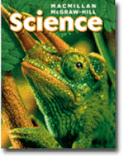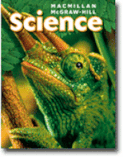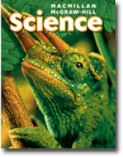5th Grade at Ballentine Elementary School
*Your child will need to log into their WCPSS account in order to access the slides linked below for each unit.
QUARTER ONE:
Living Organisms & Human Body Systems
Part I. Unicellular vs. Multicellular Organisms
Standard 5.L.1.1
Explain why some organisms are capable of surviving as a single cell while others require many cells that are specialized to survive.
Essential Vocabulary
cell, organism, unicellular, multicellular, tissue, organ, organ system, specialization, life processes
Essential Questions
How do unicellular and multicellular organisms differ?
How are unicellular and multicellular organisms the same?
How would you analyze the ways organisms sustain life?
Explain why some organisms are capable of surviving as a single cell while others require many cells that are specialized to survive.
Essential Vocabulary
cell, organism, unicellular, multicellular, tissue, organ, organ system, specialization, life processes
Essential Questions
How do unicellular and multicellular organisms differ?
How are unicellular and multicellular organisms the same?
How would you analyze the ways organisms sustain life?
Part II. Human Body Systems
Standard 5.L.1.2
Compare the major systems of the human body (digestive, respiratory, circulatory, muscular, skeletal, and nervous) in terms of their functions necessary for life.
Essential Questions
What are the major systems of the human body and what are their purposes?
How are parts of the human body both independent and interdependent?
What features of the human body are common to all humans?
Compare the major systems of the human body (digestive, respiratory, circulatory, muscular, skeletal, and nervous) in terms of their functions necessary for life.
Essential Questions
What are the major systems of the human body and what are their purposes?
How are parts of the human body both independent and interdependent?
What features of the human body are common to all humans?
Science Textbook: Human Body Systems Unit Pages
|
Skeletal System
|
|
Nervous System
|
QUARTER TWO:
Ecosystems
Science Textbook: Ecosystem Unit Pages
Part I. Biomes
5.L.2.1
Compare the characteristics of several common ecosystems, including estuaries and salt marshes, oceans, lakes & ponds, forests, and grasslands.
Essential Vocabulary
ecosystem, biome, community, population, habitat, niche, biotic, abiotic, terrestrial, aquatic, grassland/savanna, coniferous forest/taiga, temperate deciduous forest, tropical rainforest, arctic tundra, desert, wetlands (swamp), marine/ocean/saltwater, freshwater, coral reef, estuary, brackish
Essential Questions
How can you compare and contrast the characteristics of several common ecosystems?
What factors vary in different biomes?
What is something all biomes have in common?
Compare the characteristics of several common ecosystems, including estuaries and salt marshes, oceans, lakes & ponds, forests, and grasslands.
Essential Vocabulary
ecosystem, biome, community, population, habitat, niche, biotic, abiotic, terrestrial, aquatic, grassland/savanna, coniferous forest/taiga, temperate deciduous forest, tropical rainforest, arctic tundra, desert, wetlands (swamp), marine/ocean/saltwater, freshwater, coral reef, estuary, brackish
Essential Questions
How can you compare and contrast the characteristics of several common ecosystems?
What factors vary in different biomes?
What is something all biomes have in common?
Learn |
Practice |
Extend |
|
Biome Research
|
Part II. Food Chains & Food Webs
5.L.2.2
Classify the organisms within an ecosystem according the the function they serve: producers, consumers, and decomposers.
Essential Vocabulary
food chain, food web, energy pyramid, organism, producer, consumer, decomposer, scavenger, herbivore, carnivore, omnivore, autotroph, heterotroph
Essential Questions
What is the relationship between producers, consumers, and decomposers?
How can you classify organisms according to these categories?
How is an ecosystem affected if one population increases or decreases?
Classify the organisms within an ecosystem according the the function they serve: producers, consumers, and decomposers.
Essential Vocabulary
food chain, food web, energy pyramid, organism, producer, consumer, decomposer, scavenger, herbivore, carnivore, omnivore, autotroph, heterotroph
Essential Questions
What is the relationship between producers, consumers, and decomposers?
How can you classify organisms according to these categories?
How is an ecosystem affected if one population increases or decreases?
LearnA. Food Chains
B. Food Webs
|
Practice |
Extend |
Part III. Relationships Within Ecosystems
5.L.2.3
Infer the effects that may result from the interconnected relationship of plants and animals to their ecosystem.
Essential Vocabulary
population, population density, predator, prey, predation, competition, symbiosis, mutualism, commensalism, parasitism, endangered species, limiting factor
Essential Questions
How are populations within an ecosystem connected?
How can factors that impact one population in an ecosystem impact another indirectly?
What are some examples of different types of symbiosis in different ecosystems?
What are examples of limiting factors in different ecosystems?
Infer the effects that may result from the interconnected relationship of plants and animals to their ecosystem.
Essential Vocabulary
population, population density, predator, prey, predation, competition, symbiosis, mutualism, commensalism, parasitism, endangered species, limiting factor
Essential Questions
How are populations within an ecosystem connected?
How can factors that impact one population in an ecosystem impact another indirectly?
What are some examples of different types of symbiosis in different ecosystems?
What are examples of limiting factors in different ecosystems?
Ecosystems Unit Review Resources
QUARTER THREE:
Force & Motion
I. Newton's Laws of Motion & Predicting Motion
5.P.1.1 & 5.P.1.4
Explain how factors such as gravity, friction, and change in mass affect the motion of objects.
Predict the effect of a given force or change in mass on the motion of an object.
Essential Vocabulary
gravity, friction, force, motion, balanced force, unbalanced force, mass, Newton's Laws of Motion,
inertia, momentum, direction
Essential Questions
Why are all objects pulled toward the Earth?
How does gravity affect the motion of all objects?
What causes friction?
How does friction affect the motion of all objects?
Which type of force produces motion: balanced or unbalanced? Why?
How does a change/difference in mass change the motion of an object?
Predict the effect of a given force or change in mass on the motion of an object.
Essential Vocabulary
gravity, friction, force, motion, balanced force, unbalanced force, mass, Newton's Laws of Motion,
inertia, momentum, direction
Essential Questions
Why are all objects pulled toward the Earth?
How does gravity affect the motion of all objects?
What causes friction?
How does friction affect the motion of all objects?
Which type of force produces motion: balanced or unbalanced? Why?
How does a change/difference in mass change the motion of an object?
II. Calculating Speed
5.P.1.2
QUARTER FOUR:
Weather Systems
(*Not Included in the 20-21 science curriculum)
GENETICS
5.L.3
Explain why organisms differ from or are similar to their parents based on the characteristics of the organism. Give examples of likenesses that are inherited and some that are not.
Essential Vocabulary
genetic, trait, inherited trait, acquired trait, instinct, learned behavior, biological parent,
offspring, heredity, DNA, gene, chromosome
Explain why organisms differ from or are similar to their parents based on the characteristics of the organism. Give examples of likenesses that are inherited and some that are not.
Essential Vocabulary
genetic, trait, inherited trait, acquired trait, instinct, learned behavior, biological parent,
offspring, heredity, DNA, gene, chromosome



